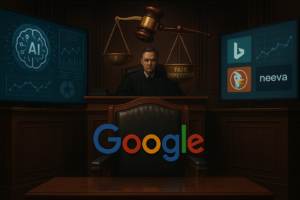Discerning Reality from AI-Generated Hoaxes: The Case of Luigi Mangione’s Mugshot
As AI-generated images become increasingly sophisticated, distinguishing between reality and fabrication is more challenging than ever. This article delves into the technology behind AI image creation, revealing how the viral “mugshot” of Luigi Mangione was debunked, and explores the broader implications for media integrity and public trust in an era dominated by digital misinformation.
The Rise of AI in Digital Content Creation
In recent years, artificial intelligence has revolutionized the way we create and interact with digital content. Among its rapidly growing capabilities is the generation of hyper-realistic images that can easily deceive the untrained eye. A recent incident involving a fake mugshot of Luigi Mangione, shared on the social media platform Threads, highlights the pressing need to discern AI-generated content from reality.
The purported mugshot, claimed to be sourced from the New York Police Department (NYPD), depicts a man in an orange jumpsuit and quickly garnered attention online. However, experts and digital tools soon confirmed what was initially suspected: the image was AI-generated, not an official police photograph.
Detection of AI-Generated Images
Using tools like “Hive Moderation”, which specializes in AI content detection, this image was identified as having an 83.2% likelihood of being created by artificial intelligence, specifically through a program known as “Stable Diffusion”. Such technology utilizes advanced machine learning algorithms to generate images that mimic the appearance and texture of real photographs, making them highly convincing.
The situation escalated with the involvement of NYPD, which denied releasing any such mugshot. Dr. Walter Scheirer, an AI expert from the University of Notre Dame, further clarified that the image lacked distinctive facial markers present in known photographs of Mangione, confirming its inauthenticity.
Challenges and Implications
This incident is not isolated. The proliferation of AI tools capable of generating fake images poses significant challenges for media outlets, fact-checkers, and even law enforcement agencies. As these tools become more accessible, the potential for misuse grows, threatening to undermine the credibility of visual media and sowing confusion among the public.
To combat this, it is crucial for platforms like Threads to implement advanced AI detection systems and for users to cultivate a healthy skepticism towards sensational content. Educating the public on identifying signs of AI-generated images, such as:
- Inconsistencies in lighting
- Anomalies in facial features
- Unusual textures
can also aid in navigating this digital landscape.
Building a Trustworthy Digital Ecosystem
Moreover, building robust partnerships between AI developers, social media platforms, and fact-checkers will be essential in establishing a digital ecosystem where authenticity is maintained, and misinformation is swiftly addressed. As we advance into an era where AI-generated content is omnipresent, embracing these protective measures will be vital to preserving the integrity of information and fostering trust within digital communities.
Conclusion
In conclusion, while AI-generated images offer exciting creative possibilities, they also present challenges that we must collectively address. The case of Luigi Mangione’s mugshot serves as a timely reminder of the potential pitfalls of this technology and the need for vigilance in our consumption of digital content.


